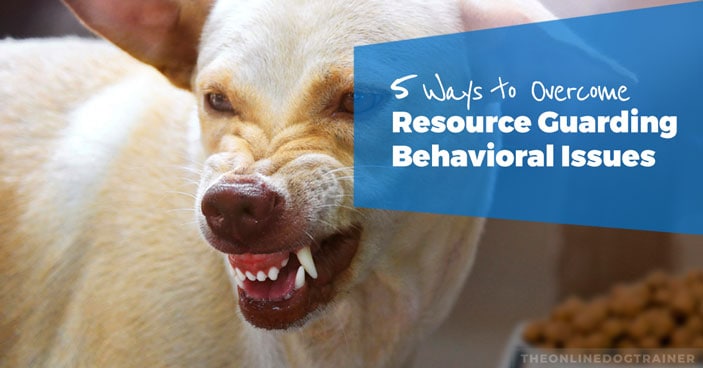
If you’ve followed me for any period of time, have read my blogs, watched my podcasts, or followed me on social media, you know that I am a huge advocate for rescuing dogs. Adopt don’t shop!
It warms my heart to see and hear from so many of you that have rescued dogs. Thanks for doing your part to make the world a better place for our canine companions!
However, I’ve recently started getting a lot of inquiries on how to manage behaviors that can sometimes come with dogs who are adopted out of shelters. To help, I’ll be releasing a series of blog posts on the most common rescue dog behavioral issues that you’ve all been asking about!
Of course, any dog (rescue or not) can struggle with these behaviors. So it’s my hope that this information is helpful to everyone!
Today’s topic is resource guarding. Why do rescue dogs struggle with resource guarding and how do you help your new pup get over the behavior?
Here are my thoughts…
What is Resource Guarding?
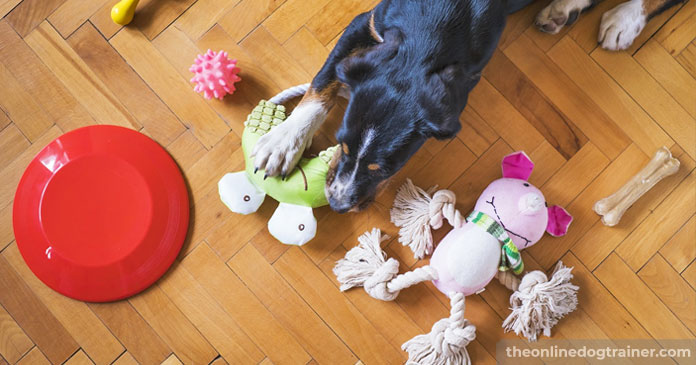
Resource guarding is a behavior in which dogs guard or hoard resources and become overly protective of them.
For example…
You may buy your dog a hard bone to chew on. The dog becomes attached to the bone and claims it. If you or anyone else (kids or other pets) try to pick up the bone, your dog will do anything to ensure the bone doesn’t get taken away. Hence, the dog guards his/her resource.
Resource guarding can occur with any object, including…
- Toys
- Treats
- Food/food bowls
- Random house objects
- Dog bed
- Blankets
- Furniture
- Etc.
Why Resource Guarding is Dangerous
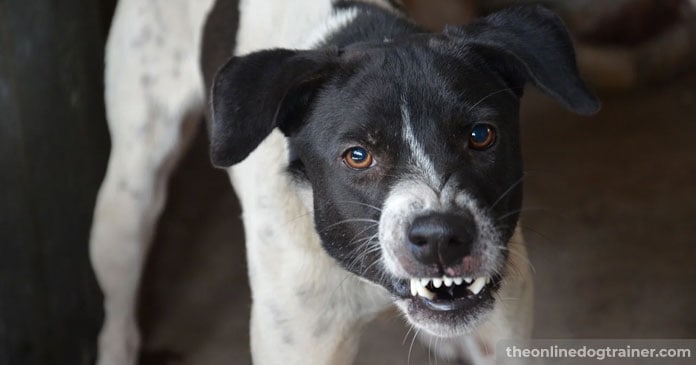
Some people watch a dog “guard” their favorite stuffed animal or toy and think, “oh how cute!” But there is nothing cute about this dangerous behavior.
At first, guarding resources might look like a dog hoarding toys. Or perhaps if you get too close to your dog's food bowl, he/she may give you a little growl. But, overtime resource guarding can become aggressive—if it’s not that way already.
Snapping, bearing teeth, lunging, and biting are all behaviors that can be exhibited when your dog feels that they need to protect what belongs to them. Toss a small kid into the mix who doesn’t understand why they shouldn’t stick their hand in your dog’s food bowl and things can quickly take a nasty turn.
Therefore, it’s so important to correct the behavior immediately if you bring home a dog who struggles with resource guarding. What can you do? Let’s talk a little about the psychology of resource guarding before I dive into the solution.
Why Does My Rescue Dog Guard Resources?
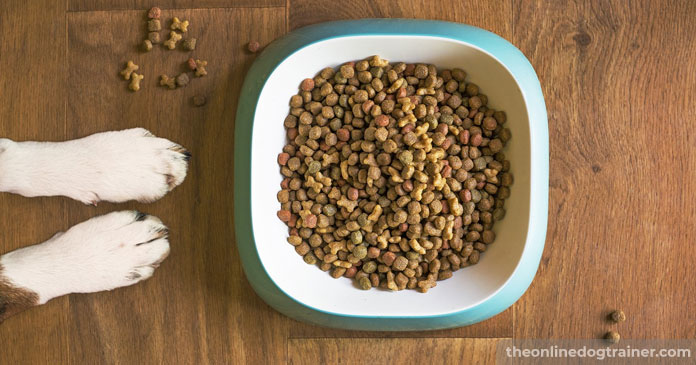
If you’ve rescued a dog that struggles with resource guarding, it’s more than likely that he/she lived in a situation where resources were limited.
For example:
Your dog may have had an owner that didn’t provide dog food, leading to your dog having to hunt down his/her next meal. If the dog was given food, it may not have been enough or your dog may have had to compete with other dogs for what little was provided.
You need to think like your dog…put yourself in their “paws”. If you were only given a peanut butter sandwich every other day to eat, you’d be rather protective of that sandwich as well!
Any dog can develop resource guarding issues. You might simply have a gluttonous pup who likes treats and bones who doesn’t want to share with anyone else. Or you might have a dog who doesn’t enjoy sharing his/her space.
Abuse and neglect aren’t the only reason dog’s form resource guarding habits. But, in this post we are specifically talking about rescue dogs and sadly, both abuse and neglect are very logical reasons why your dog might be struggling.
The good news is that any dog can overcome this problem, regardless of where the behavior stemmed from.
How do you help your rescue dog? Here are my recommendations…
Resource Guarding Solution #1: Implement a Solid Training Program
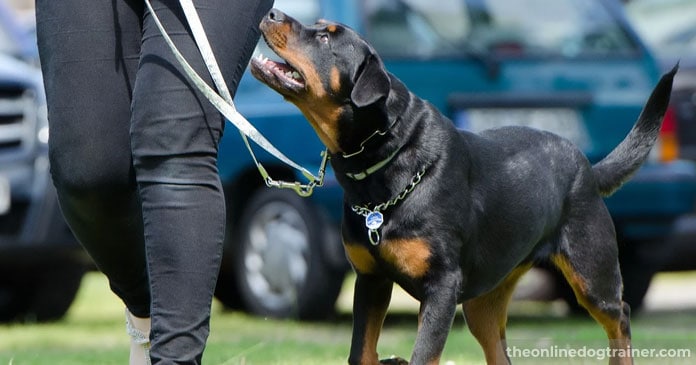
By far, the best thing you can do for your dog is to implement a solid dog training program which will help your dog calm down, relax, and look to you for guidance.
Why is this important?
Easy…many dog’s guard resources because they are fearful. They don’t trust that they are going to be taken care of/provided for. For that reason, they take matters into their own hands when they feel that something important to them is going to be taken away.
A training program—like my Dog Calming Code—is specifically designed to help your dog understand that you are the leader and provider in a kind and gentle way. When you put this program in place, your dog learns to look to you for guidance.
Once your dog is confident in your abilities to lead, he/she will be able to relax and look to you instead of having to anxiously guard everything that is important to them. At the end of the day, this is the ONLY way to permanently fix the problem as a training program reframes your dog’s mindset and helps you both to bond and form a trusting relationship.
If you’re interested in learning more about The Dog Calming Dog, check it out here!
Resource Guarding Solution #2: Provide Your Dog with a Safe Space
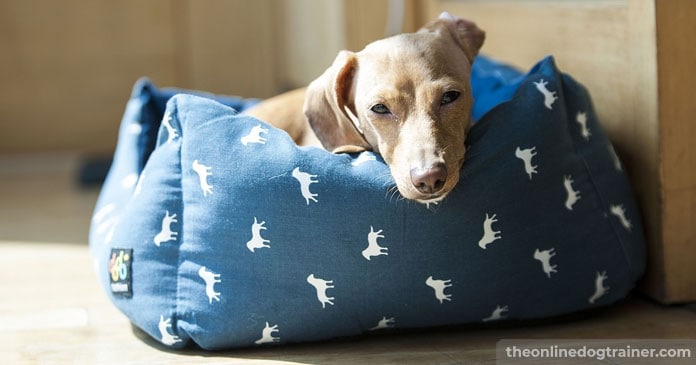
Providing your dog with a safe space is vital to helping your pup overcome his obsession with resource guarding—especially if you’ve just recently brought home a rescue dog!
I recommend setting up a crate with a comfy blanket. This crate will become your dog's safe space…like a den. It should always be available if your dog needs time to cool off or is feeling anxious.
Providing this type of space gives your dog some level of stability and will help your pup as he/she transitions to living within your home.
Resource Guarding Solution #3: Stick to a Consistent Routine
Like many humans, dogs crave routines.
Aside from having a schedule, routines provide your dog with consistency and structure. And, when you stick to your routine, your pup will catch on quickly and will expect what their daily schedule will look like.
Why is this helpful?
Dog’s are incredibly intelligent. They learn patterns which can instill a sense of security knowing what is coming next. For example…
If you wake up every morning, let your dog out to use the restroom, and then feed your pup breakfast, your dog will quickly learn that after a morning potty break he will get fed. Then perhaps in the evening you take a walk around the neighborhood, then feed your dog dinner. Once again, he will understand that every day after his/her walk, he/she will get fed.
Having a predictable schedule takes a lot of the anxiety out of “will I be given dinner today?” And, once this anxiety is curbed, your pup will be less likely to feel the need to guard resources.
It’s like having kids.
Your children will be less likely to ask “when is dinner?” every day if you have a solid mealtime routine in place. For example, you may pick your kid up from school, take her to soccer practice, come home and do homework, and then eat dinner. Over time, your kid will understand that once homework is done, it’s dinner time and they won’t have to ask.
Resource Guarding Solution #4: Take a Break from Bones and Toys
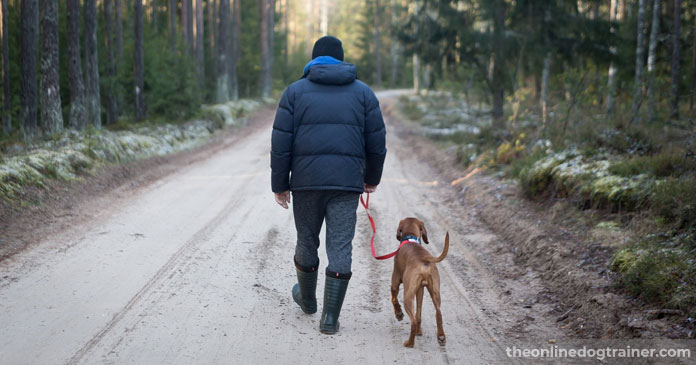
If your dog has a serious resource guarding issue, sometimes it’s best to get rid of the items they guard until you have a solid training program in place. Giving your dog a bone is not worth the risk of someone getting injured.
Instead of toys and chews, keep your dog stimulated with an extra walk in the park, someone-on-one training time at home, or some good old-fashioned scratches and cuddles.
Eliminating the source of anxiety for your dog (aka the bone your pup constantly feels the need to guard) will take a lot of stress off your pup and provide you with extra time to bond and build your trust with your new furbaby.
Resource Guarding Solution #5: Teach Your Friends/Family to Act Appropriately Around Your Dog
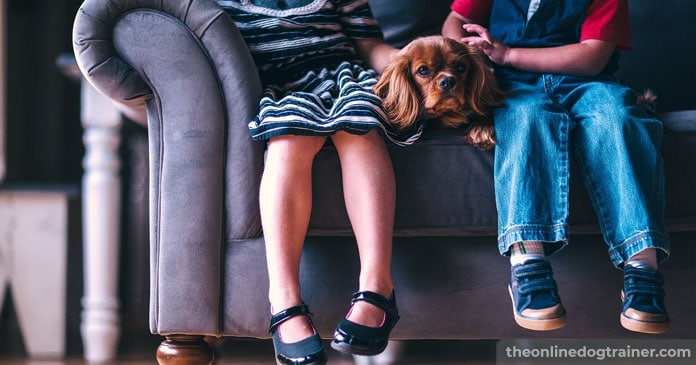
When it comes to dog behavioral issues, we are quick to point our fingers and label our dog as the problem. However, we humans need to take responsibility as well.
In a perfect world, you should be able to reach your hand right into your dog's food bowl while they eat without worrying about getting bitten. But you also need to think about respecting your dog’s space.
Would you want someone sticking their fingers into your dinner every night while you ate? I’m going to go out on a limb here and assume your answer is a big no!
It’s vital to teach your family members and friends about respecting your dog’s space.
- Don’t let your kids mess with your dog’s food bowl while he’s trying to eat. It’s not kind.
- Don’t allow people to take your dog’s toys/bones while he/she is playing. You wouldn’t want someone snatching your things while you’re playing.
- Don’t permit friends/family to invade your dog’s personal space when your pup is hanging out in his/her designated safe space. You wouldn’t want people barging in on your personal space when you need quiet time.
Educating those around you on how to respectfully interact with dog’s can really help as you work with your own pup who is struggling with resource guarding issues.
If you’re having a hard time with your new dog, don’t give up! Follow my tips above and I know with a little time and patience you’ll have your dog sorted out in no time!
Best wishes,

~Doggy Dan 🙂

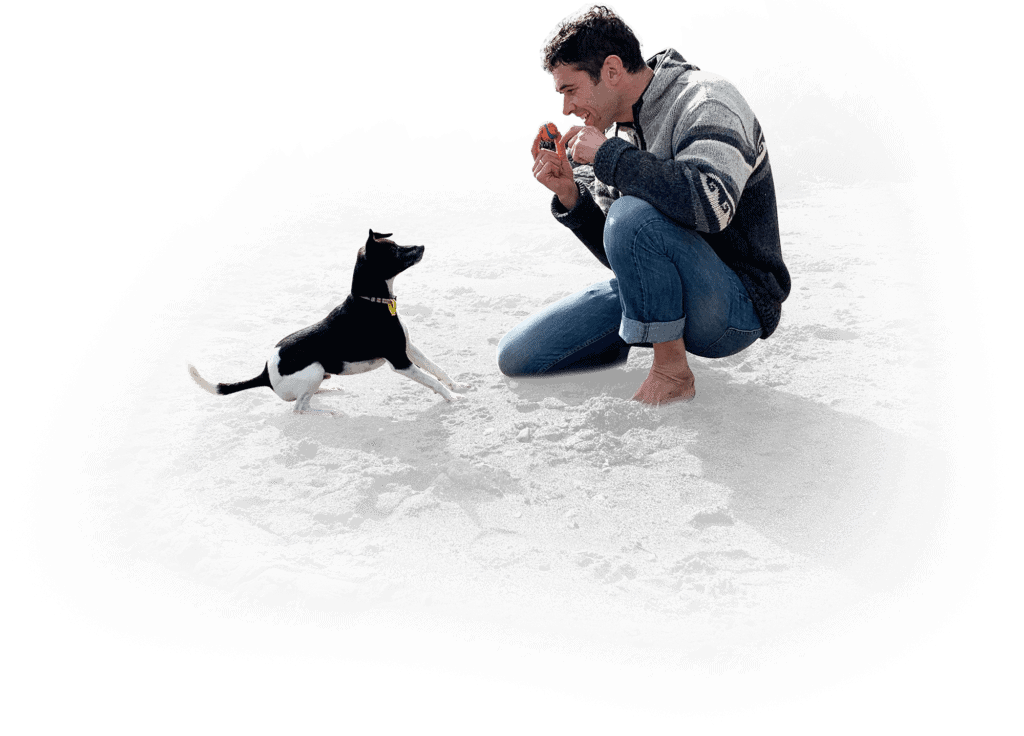
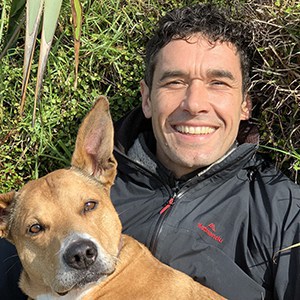
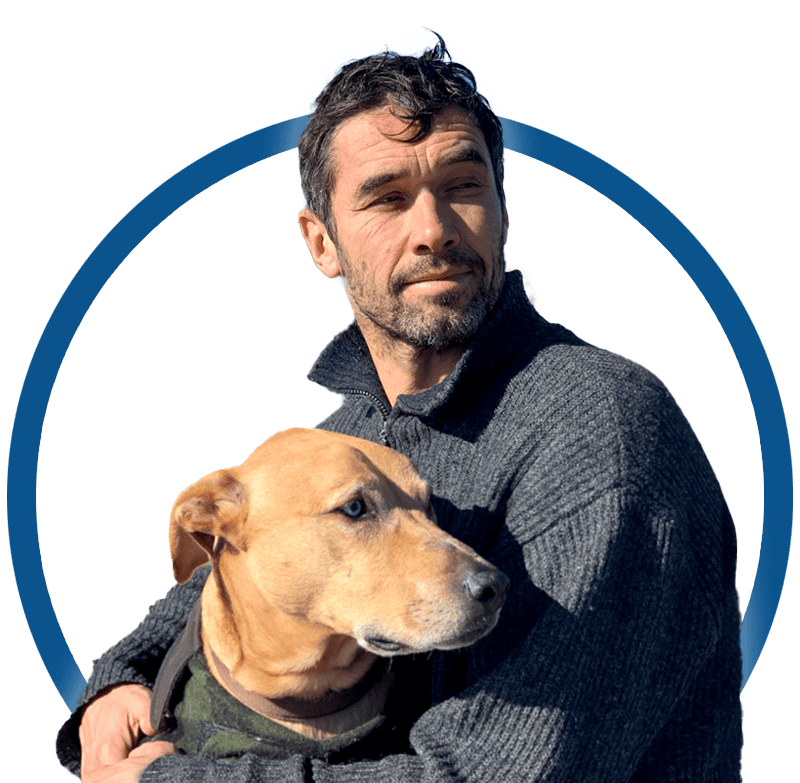
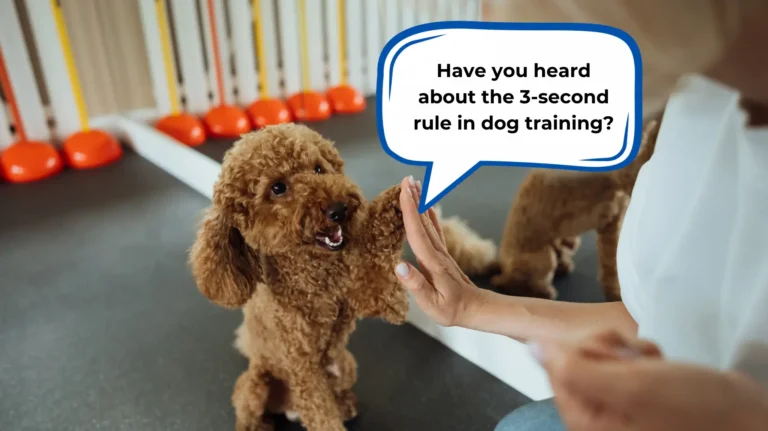
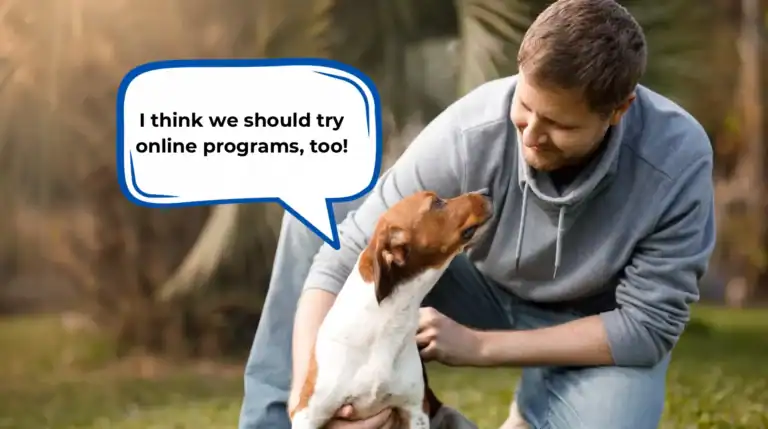
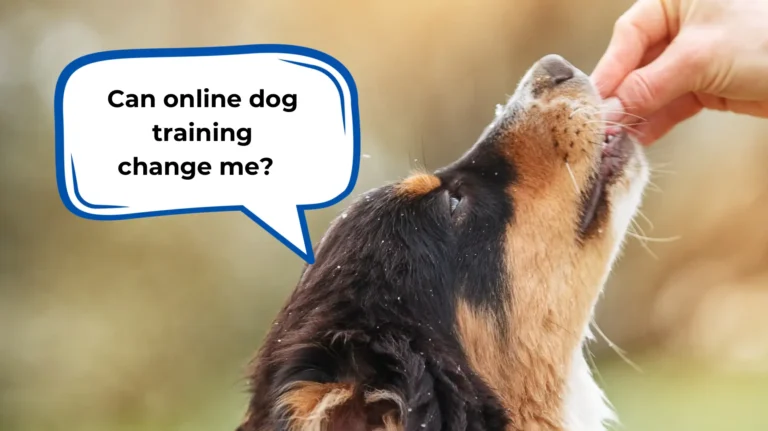
12 Responses
Hi I have a 19mth old Tibetan Terrier who I imported from Sweden. I think she came over at the wrong time in her development i.e flight or fight mode as she is generally very nervous in so many ways. She was terrified of traffic and would climb up my leg when a car went past, she also wouldn’t let anyone approach her and she wouldn’t approach anyone of her own accord. I took her to puppy classes and the first night she hid under a chair and it wasn’t until the 3rd week she took a treat off one of the trainers. That course finished so we took her to another class and it was the same performance, however, we kept going and she loved it so much she started pulling me through the door. However, I also have two other Tibetan Terriers also girls mother and daughter who are very bonded. Frida the 19mth old adores Elsie the middle one and they play and get on very well, Elsie can play with toys with her with no issues. But the most worrying thing Frida
does is she food guards but only around Elsie’s mum Lexie who is 11. Lexie is top dog but is the sweetest girl and my heart dog and I love her more than I could put into words. What usually happens is I will be sitting eating a sandwich for lunch and Frida may be next to me on the sofa, Lexie will walk in and sit in front of me and Frida starts to growl, usually I can intercept it and guide Lexie away and avoid any confrontation, but tonight Frida lept off the sofa and attacked Lexie, my husband pulled them apart and Frida bit him in the process. She is the smallest of the three but as a breed they are very strong and she is like a pocket rocket. This is not the first time she has attacked Lexie and it is usually when I am sitting eating something. She is fed alone in her crate for her meals as the first time we put her bowl down to feed the three of them together when she first arrived with us she took one look at Lexie and went for her. I think she also guards me or me and my husband, because there have been a couple of incidences where he has taken her to training class alone and when he has arrived home and put her down in the hall she has again gone for Lexie, she has also done this when my husband and myself have been out with her. We came to the conclusion that because she had our undivided attention on that particular day she was jealous and didn’t want to share us with the other two on arriving home. We have had various different people to the house at great expense to see if we can sort out her issues but so far no one has actually helped us and we are now at the point that if something can’t be done we may have to rehome her as it is a very stressful situation to live with. Any advice you can offer would be gratefully appreciated.
Kind regards
Here’s a great place to start. The Reactivity Webinar happens weekly on Wednesday and Sunday at 3pm EST (USA time). The link for the webinar is here, and you can choose this week or the following week: https://theonlinedogtrainer.com/reactivity-webinar/
If you register, you’ll get the recording via email after the webinar
Dan, my medical assist mini Aussie spent time with my sons badly behaving Jack Russell. Now when her and I go for walks she is barking and lunging at other dogs. I’ve done the calm freeze I’ve tried consistently removing her until she becomes calm. She will even greet the other dog with wagging tails and sniffing then she growls, barks and lunges. Ive never had my aussies with this type of behaviour problem. I’m absolutely lost. There is no aggression coming from the other dog that I’m aware of, but now I’m apologizing for her behaviour and she is going to lose her service status if I can’t fix this. I need guidance to know what to do, so I don’t make this worse.
Hi Tracy, one thing to review is the way you start your walk….before you have even left your property. Making sure your dog is not over-excited and pulling on the leash can have a BIG impact on her behaviour when she is on a walk. Whilst you are working on this behaviour try giving her a little extra space when you are passing other dogs. You don’t necessarily have to cross the Street but let her excitement level dictate how comfortable she is with proximity towards other dogs. She may just need a bit of a re-set to allow her to calm down and learn to tolerate other dogs in view…before you bring her too close. Also be aware that a wagging tail may not represent a ‘happy’ dog…..it generally means a dog’s adrenaline level has risen and that can happen when a dog is feeling unhappy as well!
For additional assistance my website TheOnlineDogTrainer.com deals with this behaviour…maybe take a quick look…its a $1USD trial for 3 days…All the Best, Doggy Dan
What if the resource the dog is guarding is YOU! My dog will show aggressive behavior towards my husband. This has been going on for the 3 years that we’ve had him. We assume he came from an abusive household, probably the husband abusing the wife. My husband can pet him, take him for walks, feed him, but as soon as my dog sees or hears my husband coming, he’s on guard. What can we do?!
Hi Peggy! Dogs who resource guard one of their owners, especially from other members of the family, are doing so for very similar reasons as they would food or toys….it’s a bit of a power play. If your dog is doing this then calmly remove him from the room so that he learns he will lose you as a result of that behaviour. Try not to get upset and tell him off, I find that calm and consistent actions work much better when teaching a dog to use more self-control and change their behaviour. There is another major cause for this type of behaviour and my website TheOnlineDogTrainer.com will shows you very clearly what is going on and how to overcome it…maybe take a quick look…its a $1USD trial for 3 days…All the Best, Doggy Dan
Hi Dan,
My puppy Harley is a 3 month old australian labradoodle. We brought him home when he was 8 weeks old.
He is the first puppy I had ( had a few before )that I am lost with handling him… He is aggressive towards my boys, with me and my husband. He has bitten everyone in the house to the point it broke our skin and bleed.. He is ‘kinder’ to me and Husband than my boys..
He growls, sometimes lunges and even bites when my boys (12 and 13) walks towards him to pat , carry or even play. His resource guarding during feeding time is scary! I have started on giving him some food in his bowl and then slowly feed him using my hands… he has slightly improved but still very aggressive. He jumped at me when i tried petting him after he finished his meal by saying “good Harley”.
I am afraid that he will grow to being a aggressive Dog.
Pls advise what to do or what am i doing wrong …
Hi Privina….it can be a really overwhelming time for puppies as they settle into their new home and get used to their new family members…and life without their Mum & Siblings. Harley’s behaviour is something you can overcome but the changes start with the humans in the family first. One quick tip, rather than your boys approach Harley to give him affection have them invite Harley to them to do so instead. Also, if he is sleeping or resting he should not be disturbed…..no matter how cute he looks! Learning to look at the world through Harley’s eyes, and providing him with relevant information, is key in helping him become a happy and well behaved dog. My website TheOnlineDogTrainer.com shows you very clearly how to achieve this…maybe take a quick look…its a $1USD trial for 3 days…All the Best Doggy Dan
My dog has been living with us for the last 7 years. She developed cataracts due to which her vision has deteriorated. After this issue, she became possessive with foods. Here I want to clear this that she is living with 3 others dogs with her. They are like family and there isn’t any aggression between them.
Still, my dog has developed a resource guarding behavior with foods, snacks, and even her empty bowl.
Hi Bhavesh…when a dog’s senses start to diminish it can leave them feeling vulnerable and a common side-effect of this is that they over-react in certain circumstances. Survival is far more important when dogs are feeling vulnerable and food is the ultimate in ensuring they live another day. If your dog is feeling particularly vulnerable at meal times then consider feeding her in a separate area to your other dogs, so she can eat in peace without the worry of anyone potentially trying to steal her food. All the Best, Doggy Dan
Great article, recently adopted a beautiful black Bull Mastiff X Great Dane, due to his size and colour most people aren’t too eager to invade his space (which is fortunate), but he is really an easy going softy. He does suffer from fear aggression, as he has never been walked previously, but using The Dog Calming Code, he is progressing nicely and looking to me for guidance. Love all your blogs and videos and am currently looking at starting your Dog Trainer Academy.
Thanks for your feedback Lateesha and I’m really glad you enjoy my Blogs and Videos. I love doing them because if I can provide information that helps owners understand their dog’s better then both lives are improved…..the dog is calmer and better behaved, and the owner is happier! We’d love to have you be part of our Dog Trainer Academy…All the Best, Doggy Dan